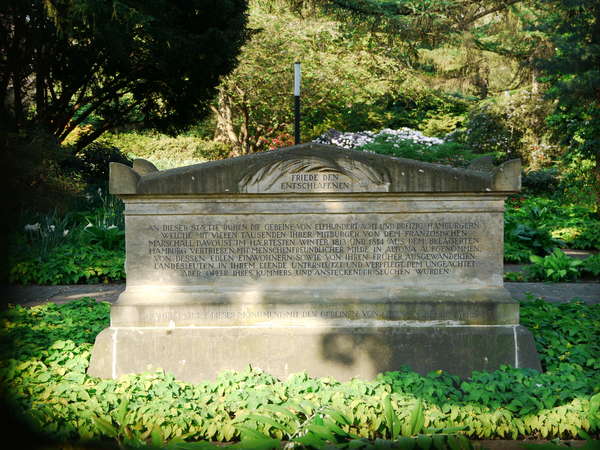Hamburg under Napoleon
- 19. November 2017 - General, Germany, Hamburg, Historical Events, Knowledge
On 19 November 1806, Hamburg was taken by Napoleon’s troops. The following 7 ½ years made an impact on the city in many ways. Today, street names and supposedly even the Franzbrötchen, a popular pastry with cinnamon, tell of the presence of the French. Economically it was a dark page in the history of the Hanseatic city and the population had to suffer a lot. At the same time, the basis for a modern administration was established. While it was taken back in Hamburg afterwards, it still was the model for today’s civil registry offices.
The Civil Code replaced municipal law. Modern administrative policies, a modern financial sector and the separation of administration and justice as well as state and church were introduced to Hamburg. From 1811 onwards, the city was capital of the Département des Bouches d l’Elbe and officially part of the French empire. There were many regional institutions located in Hamburg.
In 1811, the French legislation became officially effective, too. Civil status registers of the French style were established in Hamburg. For the first time civil status matters were not only matters of the church, but assigned to state authorities. These innovations were mostly disestablished due to a big hate on the French after the occupation ended, although many of them were quite reasonable.
The hate wasn’t unfounded, though. Economically the time of the French in Hamburg had a severe impact. The city was an important trading center for British goods on the continent. It therefore was crucial for the enforcement of Napoleon’s Continental System against Britain. It was the second most important economic partner of Hamburg, next to France. Accordingly, the trading ban led to the bankruptcy of many companies. Violations were punished severely and British goods were burned. Mass unemployment followed and with it poverty. Special taxes and on top the accommodation and food for the French soldiers were further burdens.
In February 1813, there was a short uprising of the lower classes against the French occupancy, but it wasn’t supported by the more wealthy citizens. In the following month, Hamburg was freed by Russian troops and for about 2 months representatives of the old senate and citizenship were ruling again. But as early as the beginning of May the French authorities took over again. As a punishment, the city had to pay 48 Million Franc and the Silver depot of the Hamburg bank was confiscated.
The following last 12 months under French occupancy brought even more suffering than the preceding years. The city was fortified together with Harburg. Therefore, buildings, trees, fences and hedges in front of the ramparts were burned, trenches deepened and walls raised. The main churches were converted. In the course of it even a 4.1 km (about 2.5 miles) wooden bridge over the river Elbe was build from Grasbrook to Harburg. It was destroyed only a few years later.

To be able to survive the foreseeable besiegement of the city, it was ordered that from November 1813 onwards, every household had to have food for 6 months. Many couldn’t afford this and were banished from the city, if detected. However, the city soon ran short on supplies, after it was under besiegement from December onwards. On Christmas Eve 1813, men, women and children who weren’t able to produce the required supplies, were first herded in churches and then, on Christmas and Boxing Day, banished from the city in the direction of Altona. Many of them died. In Ottensen alone, there was a mass grave for 1,138 persons. Until the end of March a total number of 30,000 people were banished.
It was not until the end of May 1814, nearly two months after Napoleon resigned, that Hamburg was handed over to the coalition forces. In the following year, the Congress of Vienna guaranteed Hamburg’s sovereignty.

03. October 2024
Constructive story!